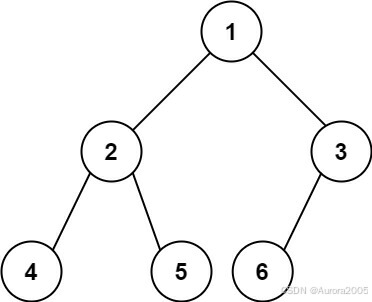Given the root of a complete binary tree, return the number of the nodes in the tree.
According to Wikipedia , every level, except possibly the last, is completely filled in a complete binary tree, and all nodes in the last level are as far left as possible. It can have between 1 and 2h nodes inclusive at the last level h.
Design an algorithm that runs in less than O(n) time complexity.
Example 1:

Input: root = [1,2,3,4,5,6]
Output: 6Example 2:
Input: root = []
Output: 0Example 3:
Input: root = [1]
Output: 1Constraints:
-
The number of nodes in the tree is in the range
[0, 5 * 104]. -
0 <= Node.val <= 5 * 104 -
The tree is guaranteed to be complete.
class Solution {
public:
int countNodes(TreeNode* root) {
if(root==NULL)return 0;
TreeNodeleftNode=root->left;
TreeNoderightNode=root->right;
int leftDepth=0,rightDepth=0;
while(leftNode){
leftNode=leftNode->left;
leftDepth++;
}
while(rightNode){
rightNode=rightNode->right;
rightDepth++;
}
if(leftDepth==rightDepth){
return (2<<leftDepth)-1;
}
return countNodes(root->left)+countNodes(root->right)+1;//后序遍历的精简
}
};
思路:
1,计算完全二叉树节点的公式:满二叉树就可以直接2*2^depth-1
2,那问题来了,怎么判断是否为满二叉树呢?遍历得到左右两边的深度,leftDepth==rightDepth就是满二叉树( Ps:这种不是完全二叉树------完全二叉树除了最低级别的以外都是满的,尽可能满足左子树)
Ps:这种不是完全二叉树------完全二叉树除了最低级别的以外都是满的,尽可能满足左子树)
3,那如果不是满二叉树怎么求呢?------后序递归求得各个完全二叉子树的节点数相加,后+1(根节点)